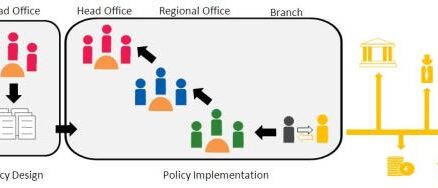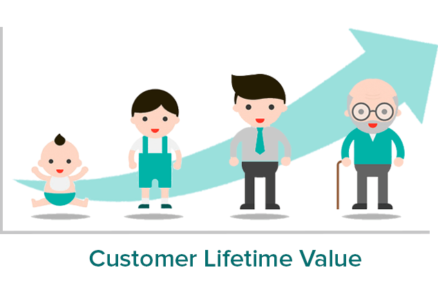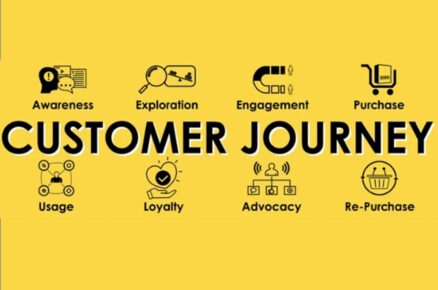Management Dashboard Examples
What is a management dashboard?
Management dashboards are used by managers and team leaders to track both project and team performance. Unlike performance reviews, which tend to take place infrequently, a management dashboard can help a manager spot performance issues as they occur. This means they can quickly get to the root of the problem, and provide support and guidance to team members who are struggling.
- Team leader dashboard
This dashboard is used by a Customer Service Director to track the performance of her Customer Service (CS) team. Their primary KPI is CSAT (Customer Satisfaction) which is taken from a customer survey delivered after each call. This allows the CS Director to track overall team performance as well as individual performance.
Here we can see that Robbie, in particular, is performing less well than his colleagues this month, with a CSAT of 82%. And although Brie is recording consistently high CSAT scores, her productivity is lower than her colleagues. Of course, good managers don’t rush to immediate judgment – she would need to probe further, and address these points as part of informal catch ups and one-to-one meetings.
The dashboard is also tracking projects directly from Monday.com, their project management tool. Here we can see that several outstanding tasks have built up. Finally, on the right hand side, we can see the CS Director has also linked her dashboard to Google Calendar so she can easily keep track of upcoming birthdays and annual leave.
-
- Focus area
Team performance, projects
-
- Who looks at it?
Manager, team leader
-
- How often?
Several times a week
What is a CEO dashboard?
A CEO dashboard is designed to provide the Chief Operating Officer (CEO) with a high-level overview of company metrics. However, the focus of these dashboards can vary. For example, some CEOs only want to see metrics related to business performance. Whereas other CEOs use dashboards to keep in touch with areas of the company, which they have been less able to devote time to, as the business has grown.
CEO dashboards often serve a dual purpose. In addition to communicating data from the business to the CEO, they also indirectly communicate the CEO’s priorities to everyone in the business. As the Peter Drucker saying goes – “What gets measured gets managed.”
Example of a CEO dashboard
CEO Overview
When your business starts to grow, and the founder takes on responsibility for building the organization, it can be hard to stay rooted in the customer experience. Although this CEO dashboard isn’t a substitute for true customer insight, it helps to build a customer-centric view of their SaaS business across many different functions and touchpoints
The CEO can easily see how many new customers are signing up to a trial, as well as important high-level metrics on product usage, account changes, and customer service. Furthermore, it provides valuable contextual information which the CEO might otherwise miss – such as the types of customers who are buying, changing or canceling their plans, as well as the general tone and content of customer feedback.
Focus area
Customer-centric view of the business
Who looks at it?
CEO, everyone
How often?
Every day
Executive Summary
In a fast moving business, it can be difficult to keep track of how each team is handling their work. That’s why executive summary dashboards take high-level KPIs from each team, and put them together, in one place. This dashboard helps the CEO understand if any one team is struggling with their workload, or has spare capacity. It makes it easier to spot any potential bottlenecks in the customer journey.
For example, this company, which sells and installs electrical appliances, has created a dashboard that takes KPIs from the marketing, sales, installation and customer service team, alongside company finance metrics. Because all of the information is in one place, it’s easier to develop a full picture of what’s going on in the business.
The CEO can easily see if a sudden increase in sales is likely to affect the demands on the installation team. If they are overly stretched, the CEO can step in to avoid a bottleneck. They can also easily see the interdependent relationship between Marketing, who generate Marketing Qualified Leads (MQL) and the Sales team who further qualify those leads (Sales Qualified Leads – SQL) before working to convert them into sales.
Focus area
Team-level KPIs
Who looks at it?
CEO, everyone
How often?
Every day
What is a company dashboard?
Whereas some dashboards are designed to support a specific team or individual, company dashboards are designed to be seen by everyone in the organization. (Sometimes they’re even designed to be seen by visitors who are passing in the lobby.) These dashboards are a great way of creating a sense of common purpose and shared understanding of company performance. They can be used to reinforce the company’s mission, vision and strategic priorities.
Examples of a company dashboard
Daily pulse dashboard
This daily pulse dashboard is designed to be placed in a prominent part of the office where everyone can see it. Remote workers are also sent a daily snapshot of this dashboard via Slack and/or email. It focuses the company’s attention on important developments in sales and customer satisfaction.
In addition, many elements of this dashboard are designed with the watercooler effect in mind. In other words, it’s a conversation starter. This includes recent social media mentions and customer feedback. The ‘biggest deals’ leaderboard is also a nice way of recognizing great performance, and encouraging friendly competition.
Focus area
New sales, customer feedback, biggest deals
Who looks at it?
Everyone
How often?
Every day
Vision dashboard
This dashboard is used by an EdTech company whose mission is to train as many young people as possible, via their online course. It goes to show that not all company KPIs need to be financial. This dashboard focuses on the number of certificates issued (the goal is to achieve 100,000) and their global reach (the goal is create alumni representing every country of the world).
By aligning their dashboard with the company mission and purpose, it creates a motivational effect. It’s a constant reminder of why team members do what they do, regardless of which team they’re in. This is further helped by the stream of recent customer feedback.
Focus area
Company mission
Who looks at it?
Everyone
How often?
Every day
What is a CFO dashboard?
A CFO dashboard is used by a CFO (Chief Financial Officer) or Finance Director to maintain a high-level overview of their company’s financial health and overall performance. It supports them as they maintain operational oversight and plan for future eventualities.
Forecast dashboard
This dashboard is used by the CFO to understand how individual teams (based in different states) are performing against budgeted revenue projections for the year. The total budgeted revenue for the year is $7.579 million and they have so far achieved $6.058 million. (Figures in the dashboard are displayed in multiples of 1000, which is a common practice in accounting).
In the bottom left corner, we can also see how revenue is tracking against the forecast. Forecasts are created at the start of the financial year and normally updated every quarter. By creating a realistic forecast, a business can better understand if they are ahead or behind budget in relation to where they would expect to be at that time of year.
In the middle section, the CFO is tracking the performance of individual teams in different states. They are using a dot chart system to flag any teams which are at risk of not hitting their target for the year. Two teams are high risk, and are looking unlikely to reach their target. Finally, on the right, we can see all teams’ current revenue performance as a proportion of their target revenue for the year.
Focus area
Revenue vs forecast, team performance, budget risk
Who looks at it?
CFO, Finance Director
How often?
Several times a month
What is a CMO dashboard?
Chief Marketing Officers (CMOs) use CMO dashboards to maintain a high level overview of their company’s marketing spending and performance. These will often include long term measures of brand health, as well as key metrics that indicate the success of current marketing initiatives.
CMO dashboard
This CMO dashboard focuses on three areas. In the first column, the CMO is tracking some important brand health metrics, including the volume of monthly searches for their brand name, the number of mentions of their brand on social media, and their current Net Promoter Score. This gives the CMO an indication of both brand awareness and sentiment, both of which are leading indicators of future commercial success.
In the central section, the CMO dashboard is tracking metrics related to customers. This includes the average Customer Lifetime Value (LTV) and Customer Acquisition Cost (CAC). Many CMOs and Marketing Directors use the LTV:CAC ratio to measure the financial sustainability of their current marketing investment. The principle being that the cost of acquiring a customer should be repaid several times over during the customer lifetime.
Finally, this dashboard is also reporting on the overall advertising spend this quarter. This dashboard is designed to give a high level overview, whereas the individual performance of these campaigns is likely to be measured by other dashboards used by Marketing Managers, such as a digital marketing dashboard.
Focus area
Overall marketing performance, marketing spend
Who looks at it?
CMO, Marketing Director, CEO
How often?
Several times a month
What is a digital dashboard?
Digital dashboards are used by businesses to visualize their KPIs in an easy-to-digest format. They reduce the need for teams to log into different platforms, create new reports or run data analysis – each time they simply want to check their key metrics.
Digital dashboards are always used in conjunction with one or more data sets. Sometimes dashboards present data that has been structured using a BI Tool, but this is not always the case. Geckoboard dashboards, for example, integrate directly with databases, spreadsheets, and many of the tools businesses already use.
Digital dashboards are powerful because they cause teams and organizations to become more aware of data they already have. They create a constant feedback loop: increased awareness of data informs decision making; and the effects of decision-making can be seen on the dashboard. And so on.
A digital dashboard’s design and accessibility, therefore, is essential to its success. It should be able to be understood by its users quickly and at a glance, without the need for any action or further explanation. There should also be minimal effort needed to access the dashboard in the first place. This is why many digital dashboards are displayed in office spaces on a TV. When a dashboard is highly visible, checking it becomes as regular as checking the time.
Examples of digital dashboards
Marketing dashboard
Live dashboards are popular with marketing teams who monitor Key Performance Indicators held in multiple data sources. This dashboard visualizes live data from Google Analytics, Facebook and Google Ads. Using the dashboard, the Marketing team can monitor a variety of important metrics related to their digital marketing, website performance and digital advertising campaigns.
On the left half of the dashboard, the team is tracking the number of sessions to their website, as well as the number of conversions that have taken place. A conversion in this case represents a new paying subscriber. From the data visualizations, we can see that over the past month, conversions have dropped off, but overall sessions have stayed the same. This indicates a decrease in conversion rates, which the team will want to investigate further.
On the right hand side, the team is also tracking two digital advertising channels, Google Ads and Facebook. Here they can monitor the overall budget utilization for the month, ensuring they don’t overspend (or underspend). We can also see performance data related to their current campaigns. Facebook Ads have not driven many sessions or new customers resulting in a higher cost per conversion and cost per click. This has triggered red status indicators, alerting the team to the issue.
Focus area
Digital marketing and campaigns
Who looks at it?
Digital Marketing Manager, Marketing team
How often?
Every day
Ecommerce dashboard
This dashboard is similar to the previous example in that it tracks the success of an online business. However, the difference here is that the business is an ecommerce business and many of the metrics it’s visualizing are pulled directly from Shopify, where it hosts its online store.
This allows the user to track important ecommerce metrics like Revenue, Orders, Order Value and Cancellations, alongside digital advertising KPIs taken from Facebook Ads. Without the dashboard, anyone interested in these metrics would need to log into both platforms and query the data they were looking for. Often, these manual steps create friction resulting in KPIs going unseen.
Focus area
Shopify performance
Who looks at it?
Store owner, Marketing team
How often?
Several times a day
Sales dashboard
Dashboards are popular with Sales teams who need to keep track of large quantities of data that can quickly change. They are particularly helpful for Sales teams who are working towards a shared goal, helping the whole team understand overall performance so they can stay on track.
This dashboard example is taken from a Sales team who monitor sales activity – outreach emails, calls and the ultimate goal, new business. Here, the team leader can gauge the quantity and quality of the overall sales activity taking place. If the team starts to fall behind, she can examine workload and priorities, and support the team to manage their deliverables.
Focus area
Sales activity
Who looks at it?
Sales Director, Sales team
How often?
Every day
Finance dashboard
Financial reporting and analysis form a large part of any finance team’s day-to-day responsibilities. However, when it comes to communicating high-level financial information to the rest of the organization, it can be challenging to present this data in an easily digestible way.
This dashboard visualizes the company’s most important financial KPIs in a way where the rest of the organization can build up a familiarity and understanding of the company’s financial health. By regularly seeing the company finances, they become more generally aware of how and when they change. This leads to a much more nuanced understanding of company finances at every level of the business.
Focus area
Financial health and performance
Who looks at it?
CEO, Finance Director, whole company
How often?
Several times a month
Company dashboard
This digital dashboard is designed to be used by the whole company and is displayed on a large TV in the office where everyone can see it. It tracks important metrics from different areas of the business including sales, customer support and marketing. It also includes real time customer feedback and social media mentions.
Dashboards like these can help to create a sense of common purpose within a company. They also create the watercooler effect, where team members spot new developments and discuss them, informally. This can spark people’s curiosity and promote a more data-oriented culture.
Focus area
Company overview
Who looks at it?
Everyone
How often?
Every day

















